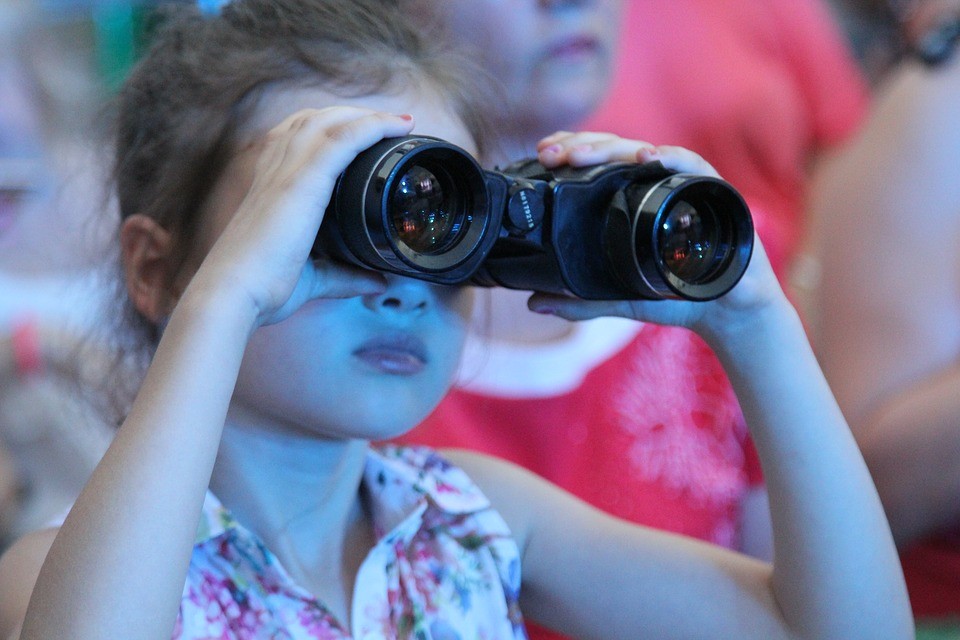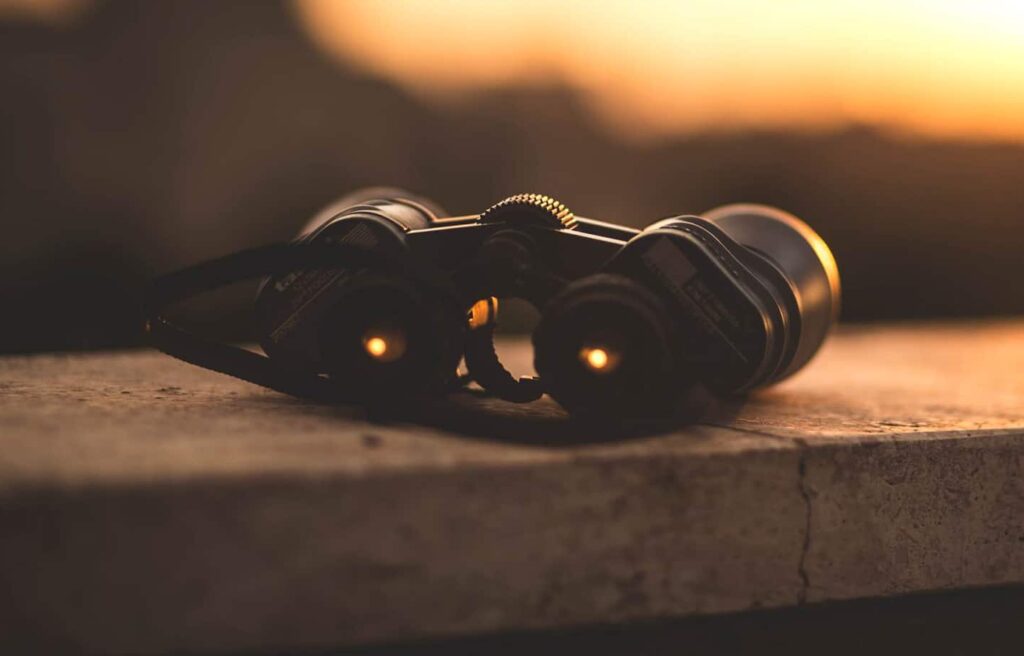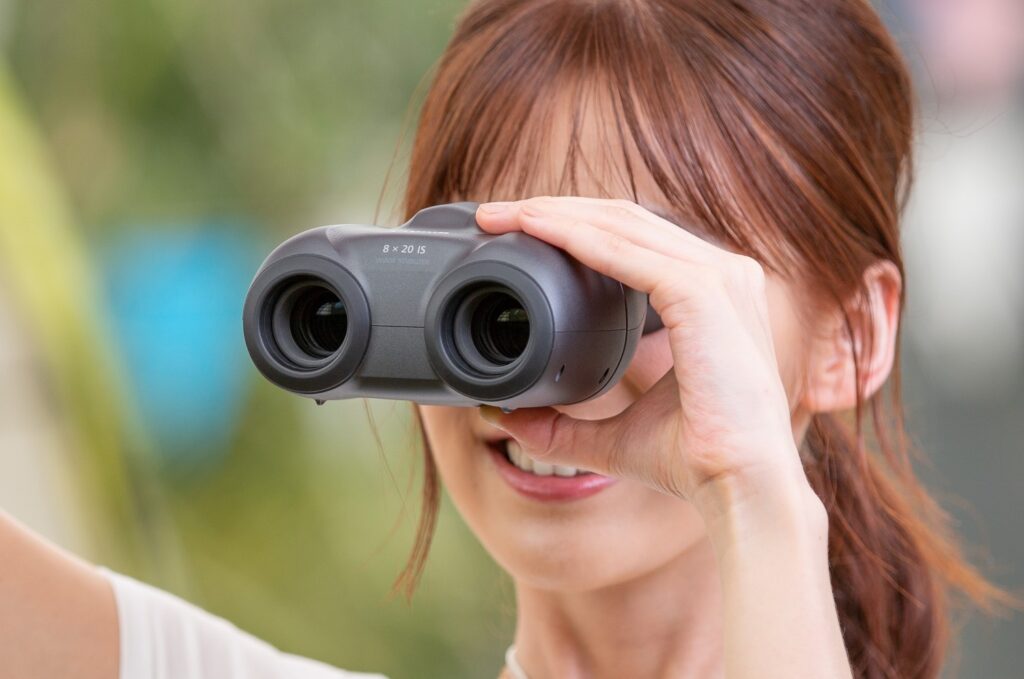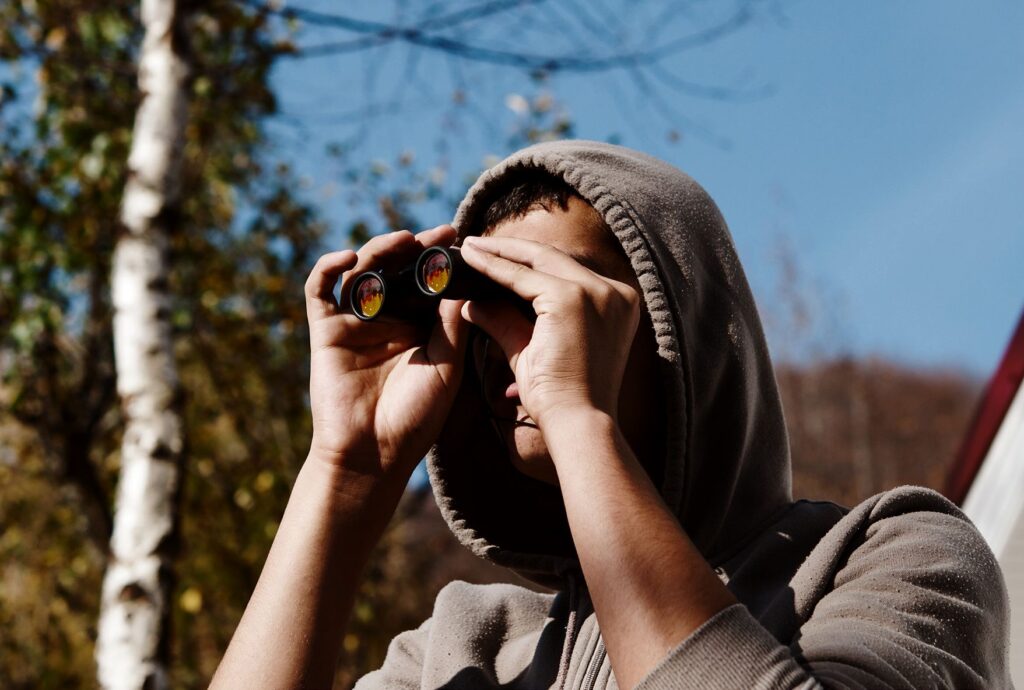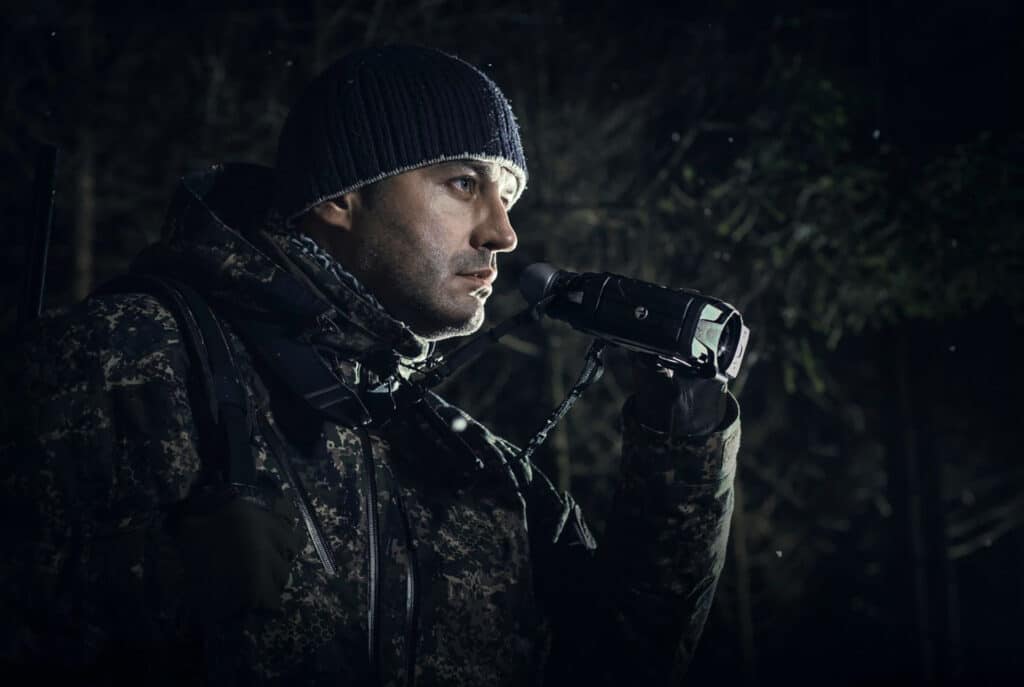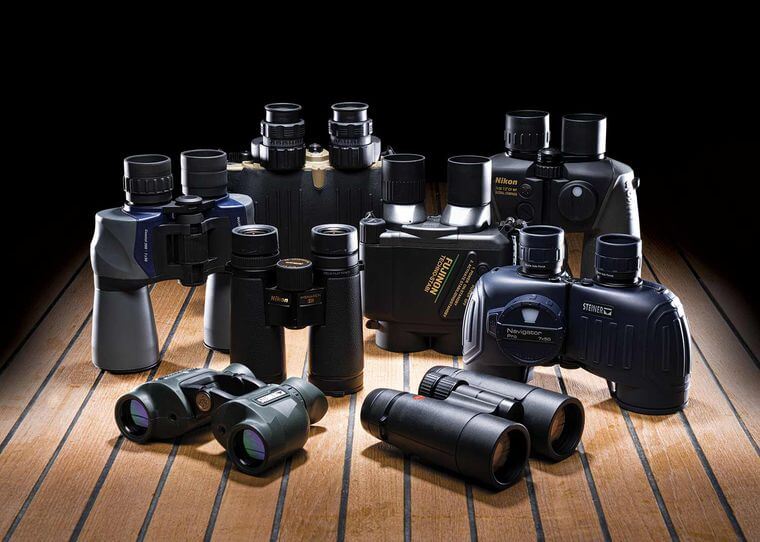

If you spend a lot of time bird watching, sports watching, fishing, hunting, traveling, sight seeing, exploring, hiking, or doing any activity that involves you looking at the binoculars more often than every other person – then you need this information. You need to ask yourself, ‘what is eye relief on binoculars?’
Imagine this! You are on a hunt, and you have just seen a meaty buck – the 8 pointer – grazing some distance away from where you stand. You pick up your rifle (with binoculars) to see it more carefully before making the kill. But as you quietly look through the binoculars, you see a blurry black vignette around the view. Then (as expected, since you know how binoculars work), you adjust the binoculars again. And again. And once again, but you still can’t see it well until the buck gets startled and runs away.
Or you are hiking, and you want to see the rest of the trail; a fuzzy view from the binoculars can cost a lot if you don’t know what’s ahead. These two instances of unclear views from the binocular have to do with eye relief.
It is the fixed distance between your eyes and the lens of binoculars. It means that there is a set distance that should be between your eye tip and the binocular lens. This distance is about 15 to 18mm. If it is shorter than this fixed distance or longer, the view you would get would be anything but a clear one. And a clear view is one that is bright and full (no fuzziness, no vignette, and no black ring playing around somewhere at the edge of the image).
Not getting a good eye relief as a bird watcher or a hiker means that you won’t get a good view. You would get smacked by your rifle constantly on your eye and might lose your eyebrow as a hunter. As a traveler or an explorer, you would miss out on all the beautiful things you wanted to see. And if you use handless binoculars during sports watching, you might miss who crossed the finish line or who won the match.
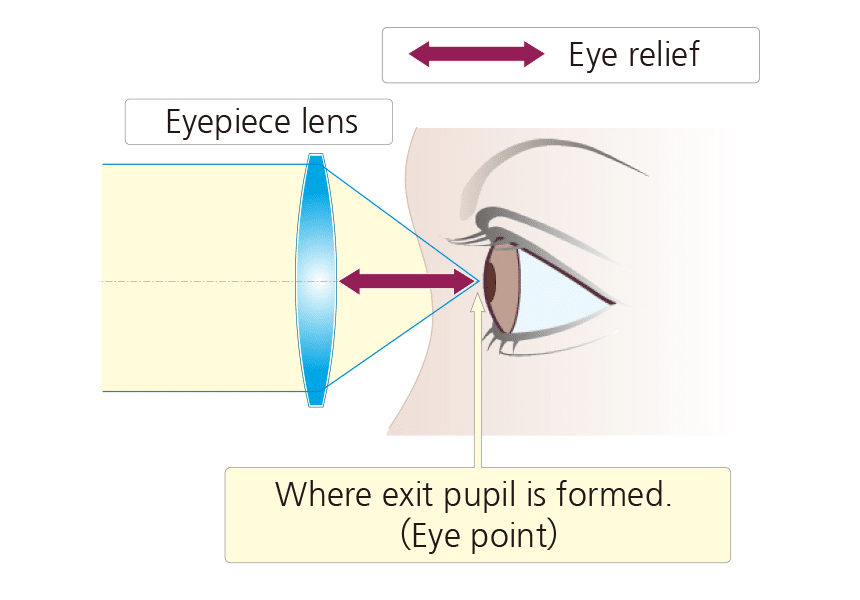 Short eye relief
Short eye reliefYou’ll know if you are suffering from a short eye relief when you are straining your eye. This is when the distance between your eyes and the lens of the binoculars is shorter than the fixed distance. If you use adjustable binoculars or binoculars with eyecups, twisting them out should fix it. If not, you might need to wear glasses (if you currently don’t). Short eye relief is anything below 13 mm, and the image would be fuzzy and have a blurry, shadowy edge.
It is when the distance between the eye exit Trusted Source Nikon | Sport Optics | Exit pupil If you use binoculars with an exit pupil of over 2mm in daylight, you won’t perceive dark images. imaging.nikon.com and the binocular lens is more than the fixed distance. And this is most common among eyeglass wearers because the eyeglass already puts distance between the eye and the glass lens. An image viewed with a long eye relief would look cropped, vignetted, and with a reduced field of view. This is between 20 to 24mm.
Though you might not use glasses while looking through a rifle scope, you can when you are watching the horses race during a sports game, or when you are traveling, or when you are fishing. You get the point. Eyeglass wearers can use binoculars without removing their glasses. And since the glasses already place a distance between the eye and a lens, it affects the eye relief measurement. Some people might also have to use glasses with binoculars to get standard eye relief (as we have earlier pointed out).
And regarding the question: what is an excellent eye relief on binocular for eyeglass wearers? The perfect eye relief on binocular for those that wear glasses is around 16 to 17mm. With this distance, people who use glasses would see the full image clearly without fuzziness or cropping. So if you wear glasses, you might have to adjust the binocular eye cups so that you can see the view more clearly or invest in binoculars with a shorter eye relief (since the glasses will make up for it).
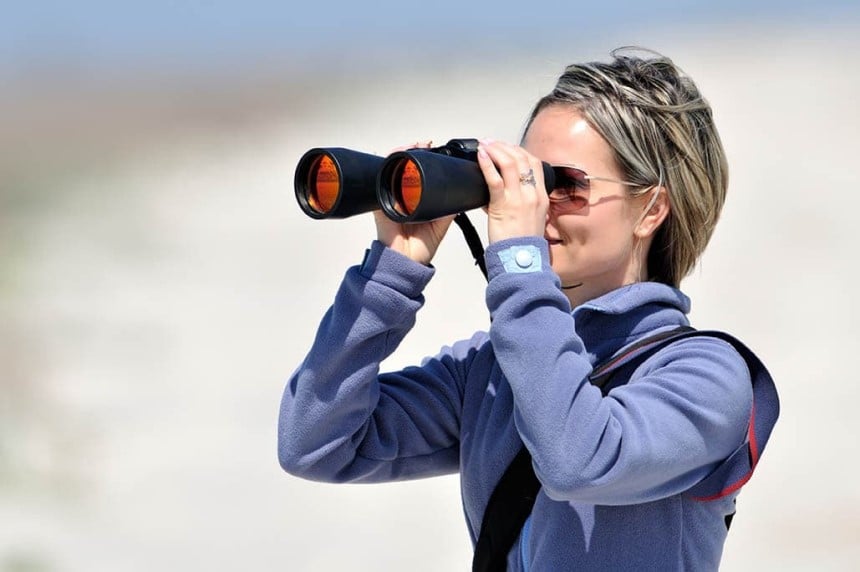
You don’t have to use a measuring tape to measure the distance between your eye and the binocular lens (not like you can, anyway). There are some other ways that you can follow to get just the right amount of eye relief whether or not you use glasses.
First, pay attention to the kind of binoculars you use. Different binoculars have varying eye relief. To get the right eye relief always, get binocular with adjustable eye relief. With the adjustable feature, you can avoid straining your eye (and get the perfect view) with or without eyeglasses.
Also, play around with the eyecups of your binoculars because you might not get the perfect view at once. However, you know how to twist the eyecups all the out or back in, rather than re-fix the binoculars to see the full image.
Here’s a tip: If you wear eyeglasses, keep the eyecups in. You already have distance between your eyes and the lens of your glasses. And if you are a non- eyeglass wearer, twist the eyecups all the way out when adjusting since there is no lens in between your eyes and the binocular lens. Trusted Source binoculars | Definition, Diagram, & Facts | Britannica Binoculars, optical instrument, usually handheld, for providing a magnified stereoscopic view of distant objects. Binoculars are designed to give an upright view that is correctly oriented left-to-right. www.britannica.com
Though the effect of bad eye relief includes losing your buck during hunting, missing who crossed the finish line while watching sports, losing an eyebrow during shooting, or not being able to see the things you hope to see during sightseeing and exploration. You can also injure your eyes from straining too much when your view is not clear or is blocked. That’s why good eye relief is very important.
In the beginning, we mentioned that the idea behind eye relief would be explained with a description of what happens with short or long eye relief. A question was also asked about the excellent eye relief for eyeglass wearers.
If you have successfully read the whole post, you would have found the answer. And you should now be able to answer the question – what is eye relief on binoculars? If so, share this with friends & family members, and begin using your binoculars with good eye relief.
